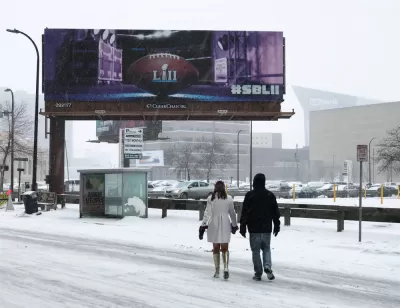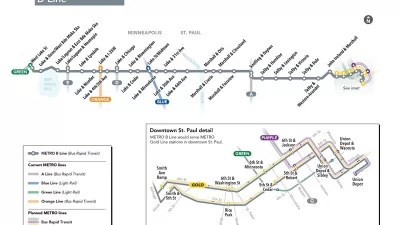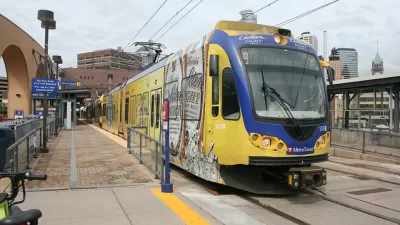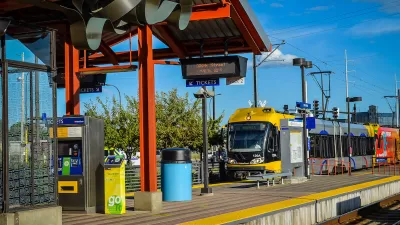Minneapolis officials are touting Super Bowl LII as "the most transit-reliant Super Bowl ever played."

With its downtown location and adjacent light rail service, U.S. Bank Stadium will take on a notably urban feel compared to the more suburban climes of most NFL stadiums.
Katie Pyzyk provides in-depth coverage of the transit planning and investment that enabled Minneapolis' claim to the title of "the most transit-reliant Super Bowl ever played." (Mark Benedict, director of light rail operations and transportation for metro Transit, is cited in the article as the source of that claim.)
Pyzyk starts out by noting the plan to sequester all light rail service for ticket-holding fans—news about the special service broke, to the chagrin of many transit advocates, in November. Pyzyk provides additional details about the light rail service on game day, including official security screening for the game at light rail stations. In effect, once you get on a train, you're at the game.
Pyzyk also details about how Metro Transit has redesigned the bus system to accommodate regular riders while the light rail system is devoted to ticket holders.
Another key aspect of the use of transit for the game is the cold weather climate of Minneapolis, which "creates the need for more Super Bowl transportation contingency plans than in cities with temperate weather." As football fans know, the Super Bowl has only very rarely been held in cold weather cities. The first "cold weather" Super Bowl, Super Bowl XVI in Pontiac, Michigan, was hit by a snow storm before the game that caused a lot of scrambling to get fans to the game.
Finally, Pyzyk also examines the process by which Minneapolis prepared for the Super Bowl by following the model provided by Santa Clara and Houston, the last two cities to host the Super Bowl.
FULL STORY: Minneapolis prepares for the 'most transit-reliant Super Bowl ever played'

Alabama: Trump Terminates Settlements for Black Communities Harmed By Raw Sewage
Trump deemed the landmark civil rights agreement “illegal DEI and environmental justice policy.”

Study: Maui’s Plan to Convert Vacation Rentals to Long-Term Housing Could Cause Nearly $1 Billion Economic Loss
The plan would reduce visitor accommodation by 25% resulting in 1,900 jobs lost.

Planetizen Federal Action Tracker
A weekly monitor of how Trump’s orders and actions are impacting planners and planning in America.

Waymo Gets Permission to Map SF’s Market Street
If allowed to operate on the traffic-restricted street, Waymo’s autonomous taxis would have a leg up over ride-hailing competitors — and counter the city’s efforts to grow bike and pedestrian on the thoroughfare.

Parklet Symposium Highlights the Success of Shared Spaces
Parklets got a boost during the Covid-19 pandemic, when the concept was translated to outdoor dining programs that offered restaurants a lifeline during the shutdown.

Federal Homelessness Agency Places Entire Staff on Leave
The U.S. Interagency Council on Homelessness is the only federal agency dedicated to preventing and ending homelessness.
Urban Design for Planners 1: Software Tools
This six-course series explores essential urban design concepts using open source software and equips planners with the tools they need to participate fully in the urban design process.
Planning for Universal Design
Learn the tools for implementing Universal Design in planning regulations.
Caltrans
Smith Gee Studio
Institute for Housing and Urban Development Studies (IHS)
City of Grandview
Harvard GSD Executive Education
Toledo-Lucas County Plan Commissions
Salt Lake City
NYU Wagner Graduate School of Public Service





























